There’s a soothing rhythm to these waves – like taking deep breaths, feeling my lungs expand, then a long, luxurious exhale. A continuous loop, day and night. The Caribbean Sea at Antigua knows how to breathe.
Much is made of how life runs at a hectic pace, fuelled by the 24-7 tug of electronics in ways that can make us feel disconnected from those who matter most: friends and family. Those breathing ocean waves? They don’t do electronics.
Add in the stream of newspaper headlines about climate change, sea life under attack by rising temperatures and mega storms, and it’s easy to feel overwhelmed, tune out and head for the tropical drinks and steel pan music (yes, they are great, too).
In the stories under some of those headlines, the boomer generation has been taking flack. But the truth is many of us have been involved in the environmental movement for decades. We fought against nuclear power, introduced recycling, banned pesticides and launched early ecotourism alternatives. We don’t all get a pass but we shouldn’t all be tarred either.
Perhaps there is a better way; one where those of boomer age can pass along wisdom and practices to our children and grandchildren. We all need to be concerned and we do have much to offer. An island like Antigua is the perfect spot for a multi-generational family trip; it’s one where we can teach the younger ones how to think about their choices and make the ones that are best for the health of the planet and their host destination.
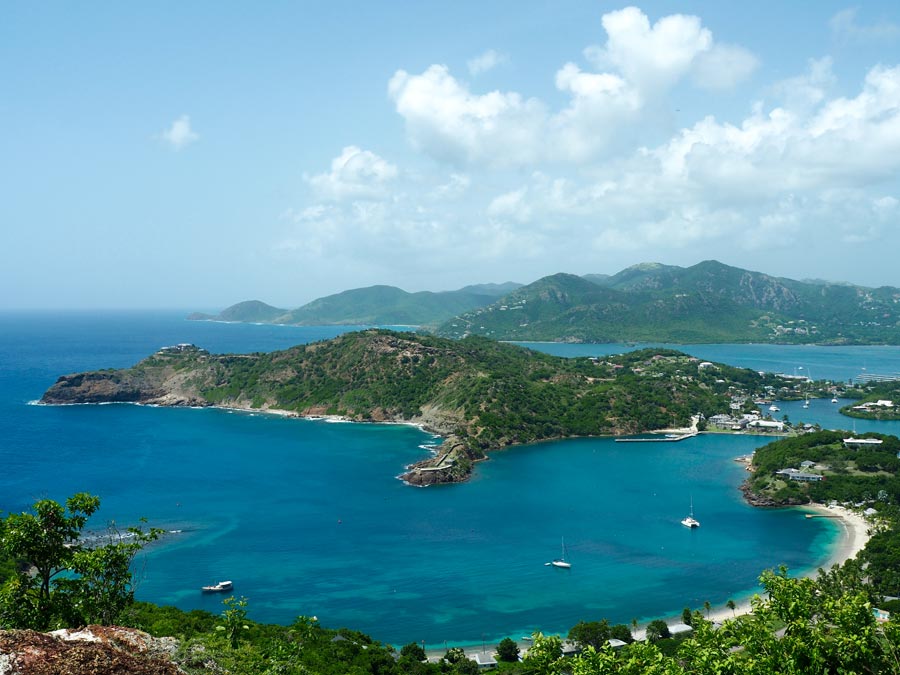
START AT THE WATER
Antigua is shaped like a dramatic ink splot with coves and a multitude of picture-perfect, secluded beaches. Locals boast about the 365 different beaches – “one for each day of the year” – and you can aim for a busy one (Jolly Beach or Dickenson Bay) or ones with a Robinson Crusoe-like vibe (like Turner’s Beach or Pigeon Point Beach). Choosing is like scanning a sea ’n’ sand menu – tell a taxi driver what kind of experience you crave, and he’ll match you with the right beach. All Antigua’s beaches are public, so even the large resorts provide a right-of-way for visitors.
Within the past year Antigua has brought in the first steps of a green initiative, banning single-use plastics and adding split recycling-waste bins. It’s a great way to show grandchildren that using cloth bags, paper straws and compostable drinking cups protects the pristine beachfronts they enjoy around the island.
Choosing a water experience demands a teaching moment with the little ones. Steer clear of the larger “booze cruise” style outings that feed sea creatures in order to attract them and aim for the smaller, authentic eco-experiences. All water experiences – especially snorkelling – are not created equal.
Eco-operators like Adventure Antigua riff on themes that intertwine history and ecology. “We focus more on educating and showing guests things that you wouldn’t normally see or learn about our beautiful island, making guests feel more like family,” says Nell Fuller, who manages communications for the outfitter.
While you’re enjoying a tropical smoothie with your grandkids, you can talk about things to consider when choosing a water excursion: How large is the boat and does the tour explore different ecosystems, like beaches and mangroves (“the nurseries of the ocean”)? Is the company locally owned and operated? Do they teach and follow proper “reef etiquette” to minimize damage to the fragile environment? Do they attract wildlife by feeding?
“Never feed the fish,” explains marine biologist Barb Whitman who has operated snorkelling businesses in the Caribbean and Hawaii. “It’s really not good for the animals to depend on people to feed them. It takes up space that should be for more nutritious food they catch themselves. It habituates them to people feeding them and if someone comes around without food, they can get aggressive when they don’t get what they expect.”
Kids love turtles, and Antigua is home to three species – the hawksbill, green and leatherback. The Antigua Sea Turtle Project is part of a growing sea turtle conservation movement. Children (and adults) can think about their choices – avoiding disposable plastics like straws and keeping the marine environment clean helps safeguard the nesting and hatching of these wonderful creatures. During nesting season, the Environmental Awareness Group of Antigua & Barbuda offers Turtle Watching Trips.
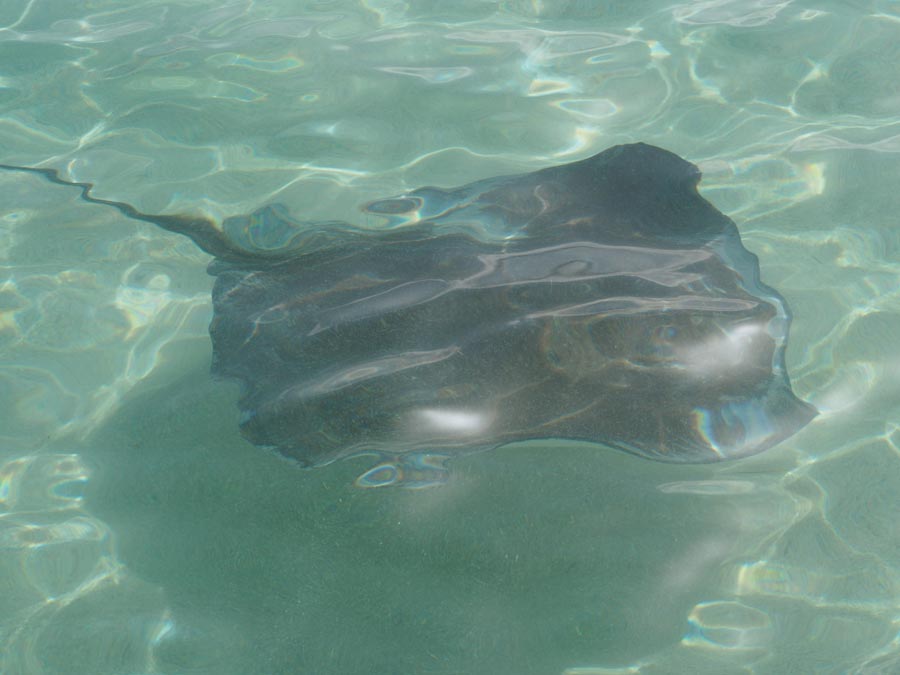
One of the island’s more popular water experiences is a visit to Stingray City. It’s a well-organized 90-minute excursion and a chance to snorkel and swim at a small reef in shallow waters along the east side of the island. The southern stingrays are curious but, unfortunately, they’ve been conditioned to come when they hear the boat they associate with food. We snorkelled far away from the feeding action – and expressed our concern about the feeding practice – and were still able to observe many beautiful wild rays as well as other sea creatures like jellyfish, blue tangs, parrotfish and striped sergeant majors. The “photo op” we took away were pictures stored in our memories of the magnificent, docile stingrays as they went about their normal business.
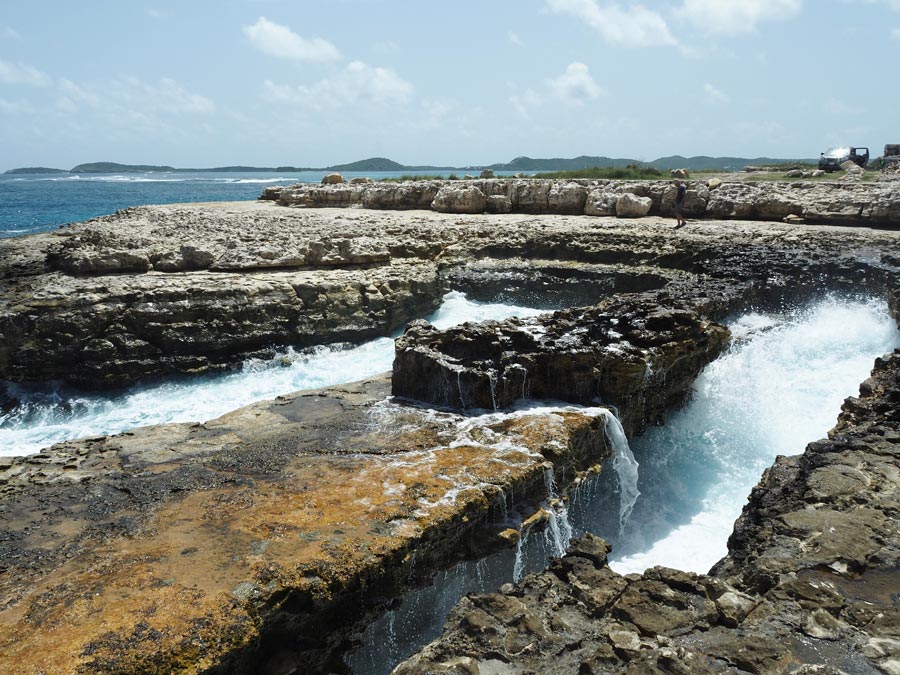
Close by, Devil’s Bridge National Park (above) is a natural rock arch carved by the sea out of the limestone cliffs. The sad legend is that during Antigua’s colonial period of slavery, enslaved people leapt to their death off the stone arch rather than be subjected to a life of backbreaking work on the plantations. The myth is that the devil claimed those who jumped from the bridge into the powerful waves of the sea. Sitting on the rocks and watching the spray of saltwater is the perfect setting to talk with grandchildren about that dark period of history.
ON TO THE RAINFOREST
The heart of the island – away from the beaches – is rainforest and getting there involves a taxi ride dodging goats and chickens on the roadway. We stopped at small produce stands piled with guava, miniature Antiguan black pineapples and tiny, sweet fingerling bananas. The deeper we drove into the interior, the larger and lusher the vegetation became.
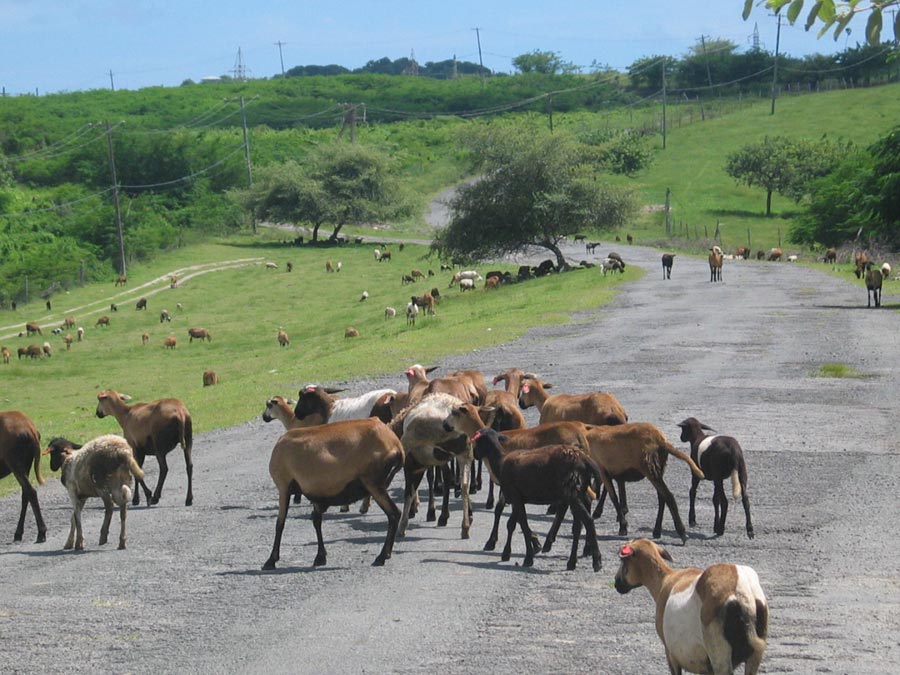
Fig Tree Drive, the island’s most scenic road, climbs through the greenery of coconut palms, banana patches and trees heavy with breadfruit and avocados. (For a larger-scale food experience, head to the Saturday vegetable and fish market in St. John’s. The wooden stands are piled high with ruby-red sorrel, avocados, papaya, prickly green soursop, strips of peeled sugarcane, plantains, bunches of lemongrass and seafood like Antiguan lobster, red snapper and conch.)
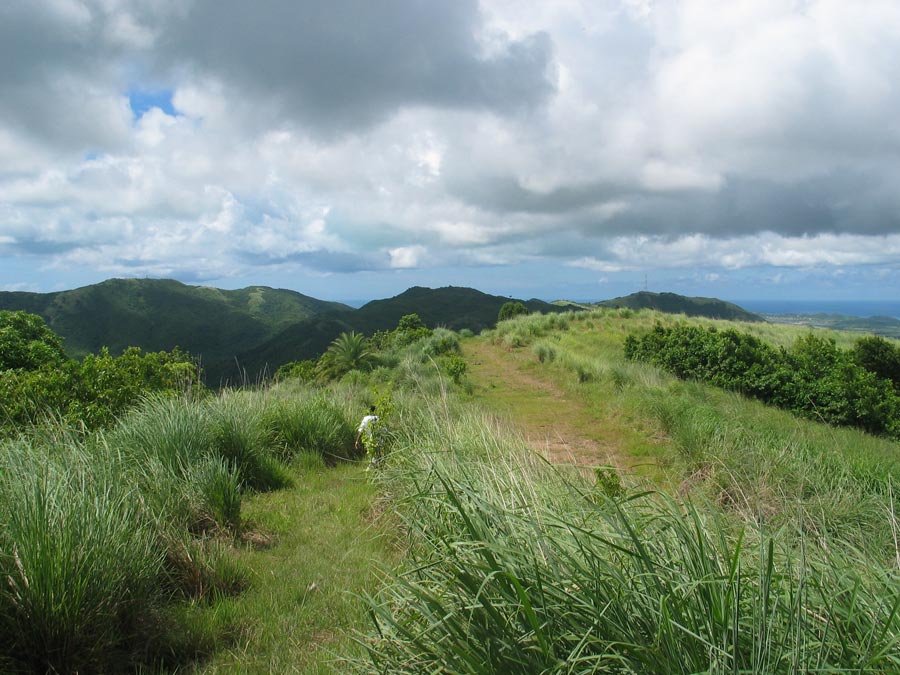
One of the island’s last remaining stands of mixed evergreen-deciduous forests is protected at the Wallings Nature Reserve, with its popular hiking trail to Signal Hill. Islanders believed that spirits lived in the roots and branches of the forest’s spine-covered sandbox tree and the wide-spreading silk cotton tree, so they were never touched during colonial-era logging.
The trail is steep – not suited for toddlers – and near the top the thick trees and snakelike aerial roots hanging from the bearded fig tree thin out, and the pathway is lined by tall, fragrant lemongrass. The view from Signal Hill is spectacular, looking over the last 250 years of island history. There are vistas over English Harbour and Nelson’s Dockyard, a National Park and UNESCO World Heritage Site, where Admiral Horatio Nelson sailed into Antigua in the late 1700s, looking for a safe and secure harbour to shelter the British naval fleet.
In the distance is Shirley Heights, once the main fortifications of the British troops stationed on the island. The vintage 1791 guardhouse has been restored into a bar and kitchen area, and Shirley Heights is a hopping Sunday night destination to watch the sunset while listening to steel pan and reggae beats.
Not far from Wallings Nature Reserve is the zip-line tour at Antigua Rainforest Company. With 13 zip lines and suspension bridges – including The Screamer – they’ve taken guests as young as four years old. Not minding the heights and a passion for Tarzan goes a long way to help “survive” the two-hour experience.
Whether on a zip line, breathing through a snorkel or hiking a steep pathway, Antigua offers us the gift of becoming part of the landscape, rather than simply observing. The past and the present, indoors and out, they all combine to create something unforgettable. And “unforgettable” is just the kind of experience to share with your kids and grandkids.
GETTING THERE
Global air travel causes approximately two per cent of the world’s carbon emissions.
WestJet teams with Carbonzero to help reduce the effects of climate change when travellers purchase carbon-offset credits. A return fare between Toronto and Antigua would produce 0.63 tonnes of carbon emissions. The cost to purchase carbon-offset credits would be about $18. www.carbonzero.ca/westjet
Air Canada works with Less Emissions to allow travellers to purchase carbon-offset credits. For example, a single return fare between Calgary and Antigua would produce 2.3 tonnes of C02 emissions and the carbon-offset credits would cost about $55. www.less.ca
WHERE TO STAY
Families are top-of-mind at the Verandah Resort, a Green Globe Certified Resort on the east side of Antigua. The rooms and cottages are family-friendly (many with separate bedrooms and kitchens), there’s a large family pool, beaches, a kids’ program for the young ones and lots of activities for older children and teens. www.verandahresortandspa.com
If you can add on a few days after the youngsters have gone, head for Verandah Resort’s sister property, the soothing Galley Bay Resort on the northwest coast of the island. The resort is adults-only, and stays are in small cottages, with waves lapping a stone’s throw away. It’s a getaway property where you’ll be treated like family. www.galleybayresort.com
This story was originally published on Oct. 23, 2019
—
Josephine Matyas has been snorkelling the Caribbean since 1973 when she worked at a marine biology station for a summer. She has a university background in environmental studies and often writes about soft outdoor adventure and responsible tourism. You can read more at www.writerwithoutborders.com.
